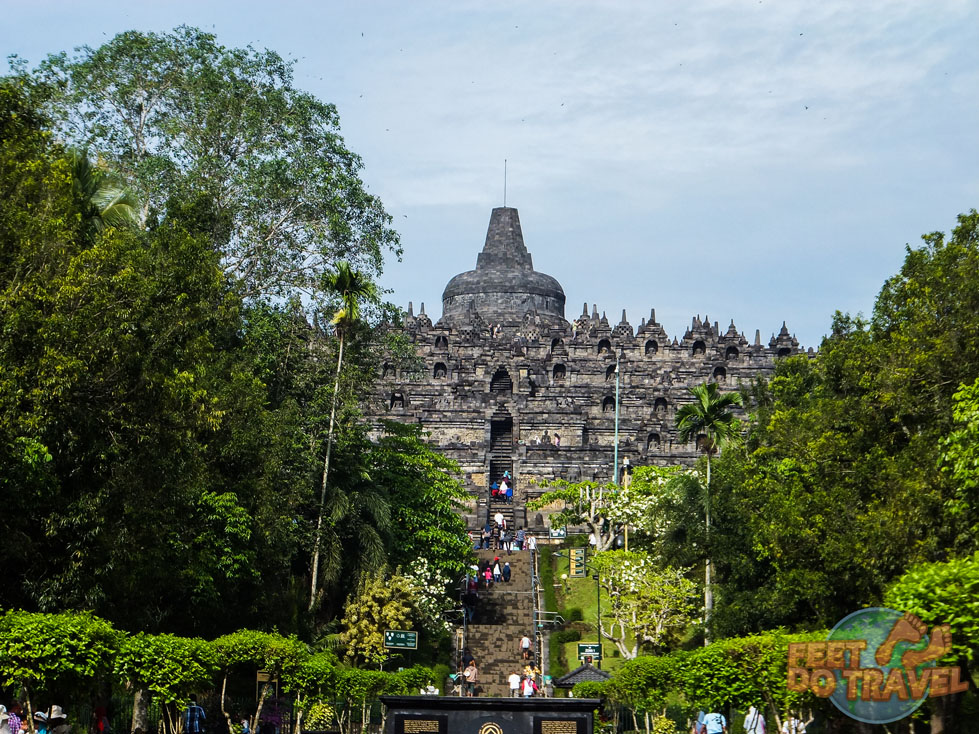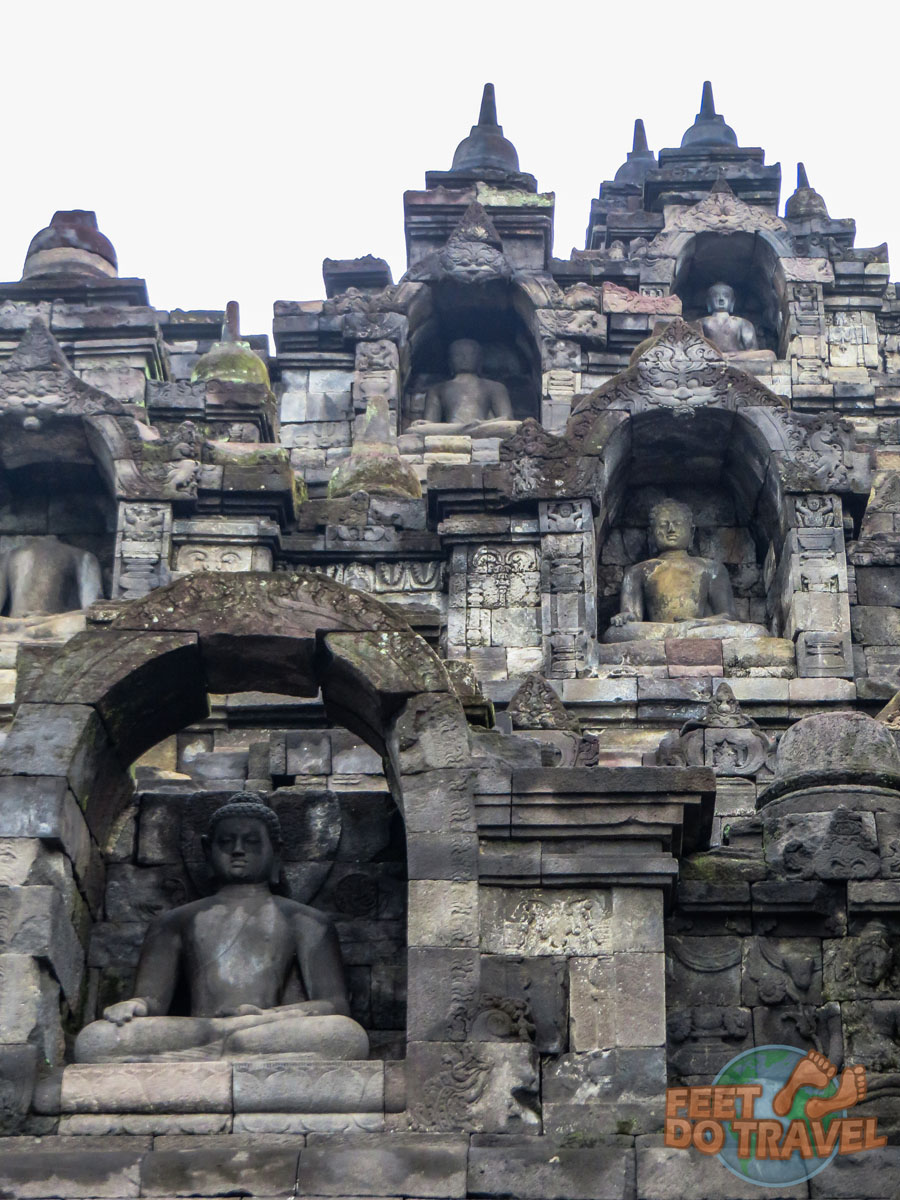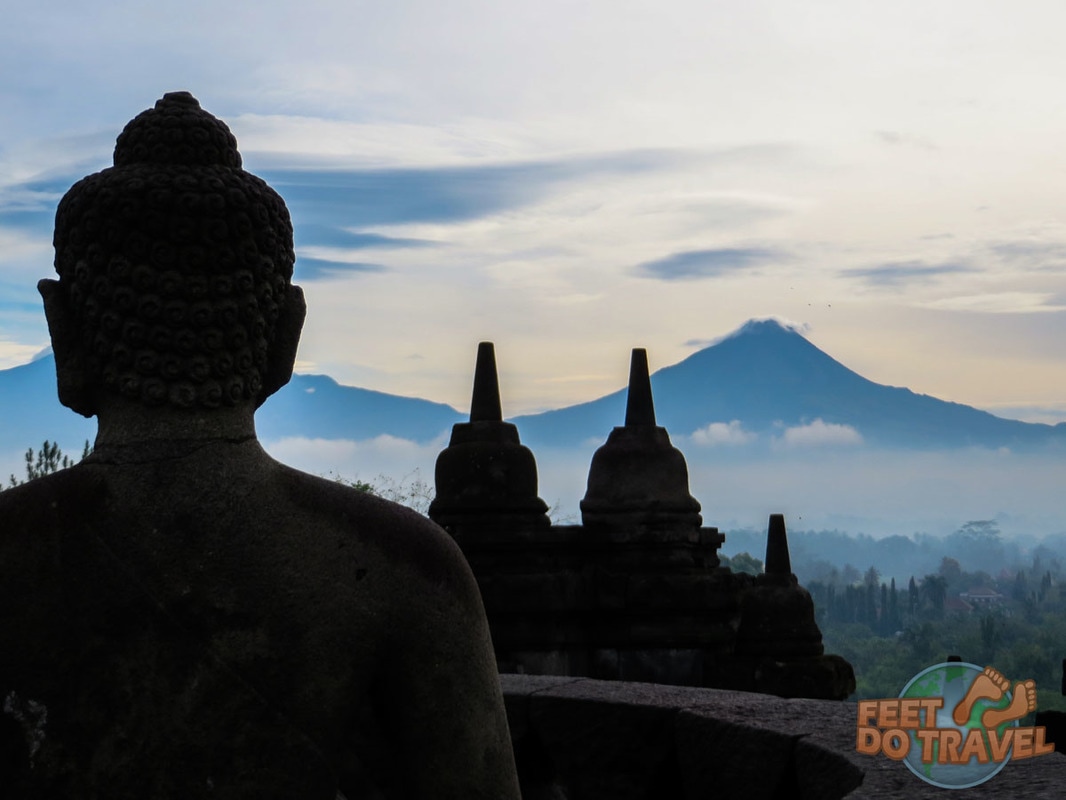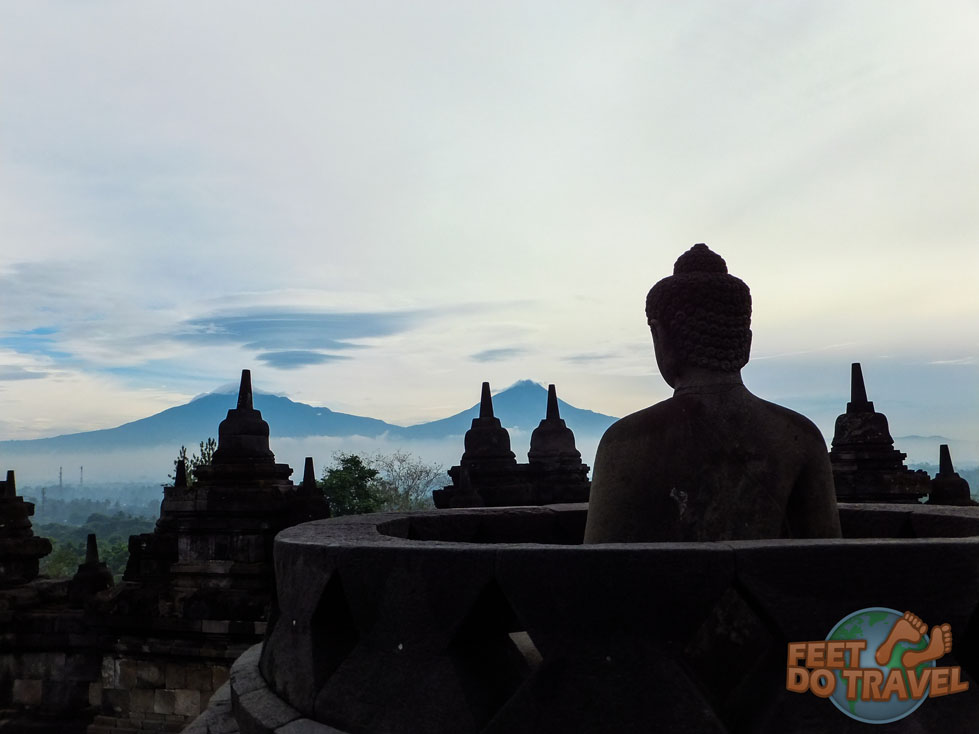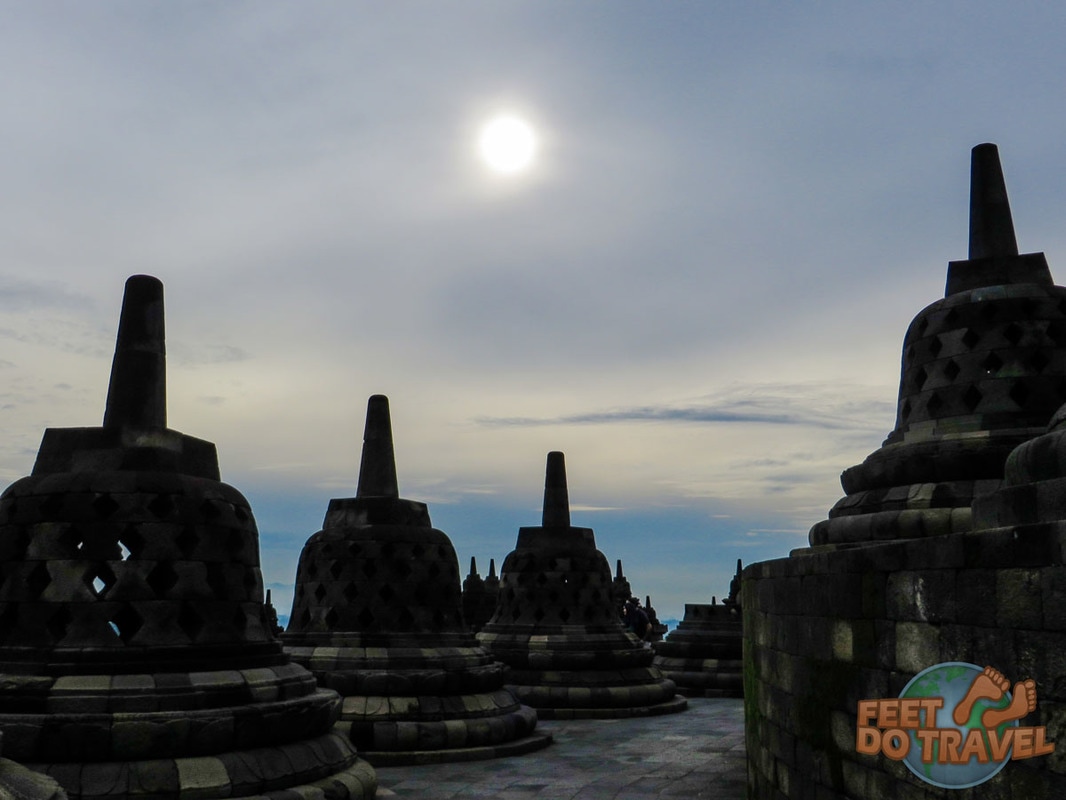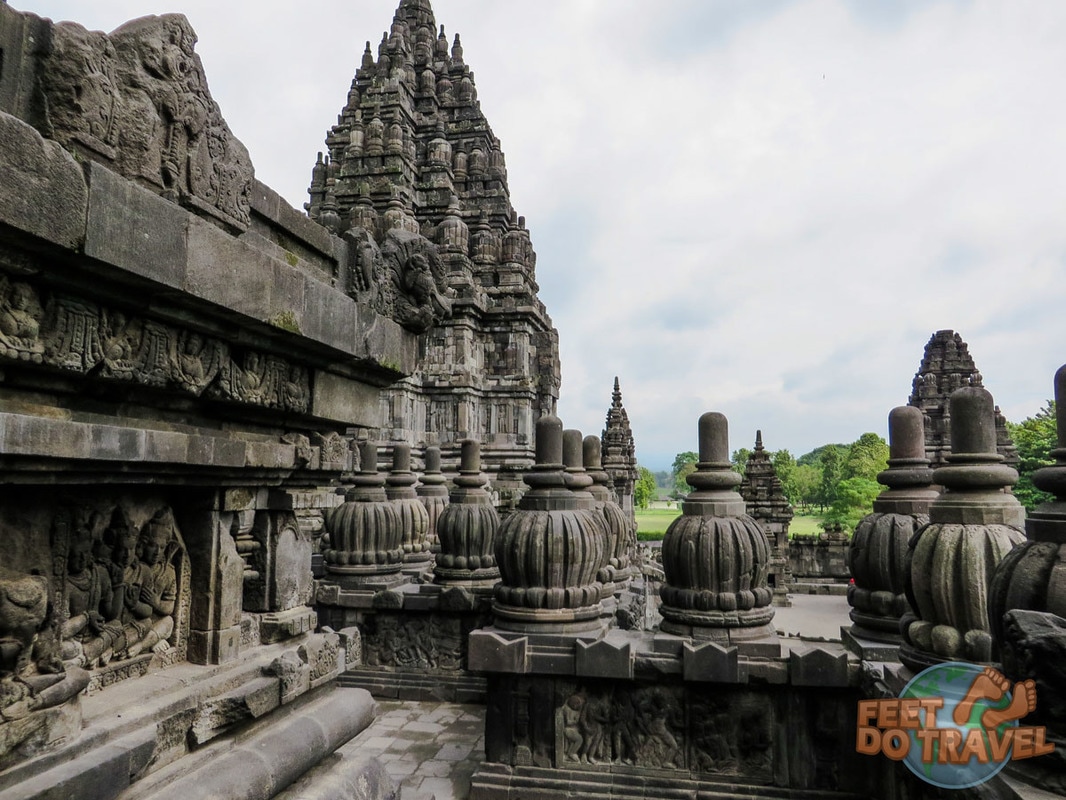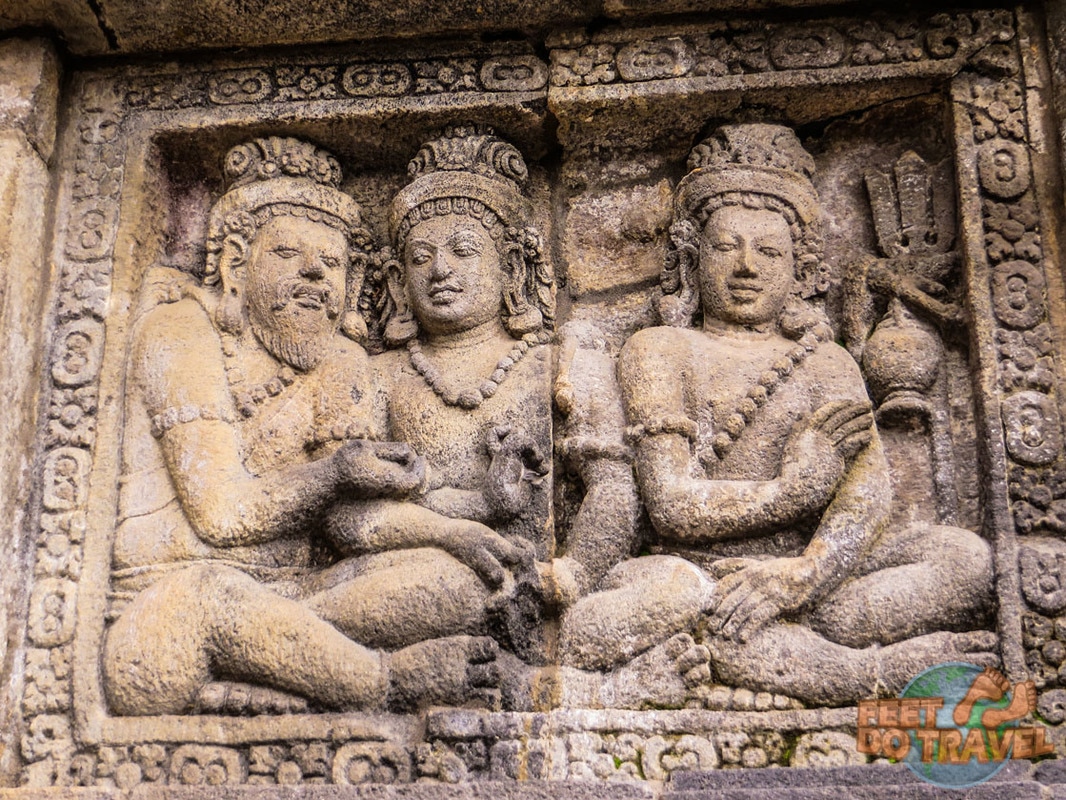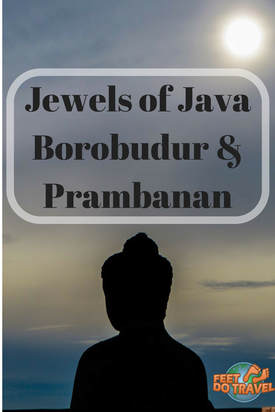By 10am, we had already been to Borobudur in Java's Yogyakarta. A 9th Century temple, one of the greatest Buddhist monuments in the world, and a UNESCO World Heritage Site - not a bad start to the day at all and certainly no Monday morning blues!
What was it about Borobudur that made it such a beautiful place to visit before breakfast?
Java, Indonesia is the fourth largest island in the Country. The capital of Java and also Indonesia is Jakarta, which dominates the country both politically and economically.
Java was voted the Best Island in the World 2018 according to Travel + Leisure, making it's first appearance beating it's more famous neighbour Bali, which ranked second. The Indonesian island of Lombok was third place.
Borobudur Buddhist Temple
The temple at Borobudur is located in Yogyakarta, and sits majestically on a hilltop overlooking lush green fields. The stonework of this temple was built without using any kind of cement or mortar, it is like a set of interlocking Lego blocks without any glue; the more you hear about this monument, the more fascinating it becomes.
It is amazing to learn that this monument, which is both a shrine to the Lord Buddha and a place for Buddhist pilgrimage, was buried underneath volcanic ash for centuries until it was re-discovered in 1815. Thankfully in the 1970’s, the Indonesian Government and UNESCO worked together to restore Borobudur to its former majesty. The whole project took eight years, is now one of Indonesia’s most valued treasures and the single most visited tourist attraction.
After visiting Borobudur, we happen to agree!
Approaching the entrance, we could see Borobudur Temple looming in front of us and it was spectacular!
Some of the sculptures depict part of Buddha’s history, from his descent from Heaven, to his enlightenment under the Bodhi tree, and finally to his first teachings in the city of Banaras.
Prambanan Hindu Temple
I will start with a little known fact for you; Prambanan, the 9th Century Hindu Temple, is actually older than Angkor Wat by around 300 years so if you are in this area, you should definitely check it out. It is easy to compare the two temples as there are similarities, but Prambanan needs to be viewed for its own story and history.
|
Prambanan isn’t just one temple, but a collection of different sized temples, each one representing a different Hindu divinity; Shiva (the destroyer), Brahma (the creator) and Vishnu (the keeper) plus temples for the three animals that serve them; Nandi the bull (Shiva), Hamsa the swan (Brahma), and Garuda the eagle (Vishnu). |
There is a wonderful statue of Durga, the warrior Goddess, who was Shiva's consort. We were told if you touched her tummy you will be slim, if you touched her face you will be youthful and if you touched her breasts you will be blessed with big boobs! Of course we obliged in this custom, but I won’t tell you which part we touched … it’s a secret!
What fascinated us the most about this temple were the four entrances guarded by twin Dvarapala statues. Dvarapala are door or gate guardians often portrayed as a warrior or fearsome giant armed with a weapon. Although this was an interesting temple, after seeing the majesty of Prambanan, we had little enthusiasm left in us to truly appreciate this site and maybe it would be best viewed first.
We ordered two delicious meals and ice cold drinks – oh man, we were in heaven! Rather strangely, behind the restaurant was a herd of deer and a Cassowary; what bizarre animals to have at a Temple site within Indonesia.
Disclaimer: This post contains some affiliate links. If you click through and make a purchase, it won't cost you any extra, the small commission we may earn will help support the FeetDoTravel community.
If you have the time, I would suggest visiting these two temples on separate days. They are both large, impressive and are not very close together. I also personally feel that, because they are both so different, it’s better to have a “clear head” when visiting, however it is possible to do both in one day, if you visit Borobudur for sunrise to give you extra time.
The most cost effective way of visiting both (especially Borobudur for sunrise) is to arrange transport only to Borobudur, buy a combined ticket for both temples at the office in Borobudur and visit Prambanan under your own steam. This is the option we chose and was arranged through the Backpackers where we were staying. Most accommodation can arrange this for you.
Sunrise and sunsets at both Prambanan and Borobudur are meant to be stunning (we visited in February during the wet season so it was cloudy at these times of day).
Borobudur is an hour away from Yogyakarta and most hostels/hotels arrange trips which is easier than doing it alone. If you are here during the dry season, a sunrise trip will be amazing (if the weather is right!). The cost to visit Borobudur will vary depending on whether you are here for sunrise and if you want to combine it with Prambanan.
Entrance fee: US$ 22, or a combined ticket with Prambanan is $32
Visiting Prambanan
Located only 17km away from Yogyakarta centre, it is easy to reach Prambanan independently. Catch the TransJogja 1A or 1B bus to the final stop which takes approx. 45 minutes, then it’s about a 1km walk to the entrance. The bus service is clean, comfortable and efficient.
Entrance fee: US$ 18
Local bus tickets cost 3,600 IDR
How to get to Yogyakarta, Java
Flights: Air Asia fly to Yogyakarta from various countries as well as within Asia. We opted for the one-hour flight from Jakarta but you can also fly from Bali.
By train: From Jakarta, the train journey takes eight hours.
If you are travelling around the rest of Asia, we recommend you check bus, boat and train schedules ahead of time with 12Go Asia website. You can also book your tickets in advance online (as we did) to save time and hassle.
Where to stay
As we were on a budget, we stayed at Laura’s Backpackers which had excellent reviews and lived up to its reputation as a quiet backpackers. The owner (Laura) provides outstanding travel advice and information not just locally, but for Java generally.
When to visit Java
Oct – April – Summer, rainy season
May, June & Sept – Winter, dry season
July & August – high season so expect crowds and higher prices

Book your Yogyakarta, Java, Indonesia, any weekend break or holiday hotel through our website. We always use and are proud to have an affiliate partnership with Booking.com. Visit our Hotel Booking page now!
Lembongan – Bali but Better!
Awesome Things to Do in Nusa Penida - Bali's Best Kept Secret
15 Things to Do in Canguu, Bali
Bali - Is Sanur Worth Visiting? You May Be Surprised
Indonesian Orangutan Adventure
10 Must Try Indonesian Dishes
Derawan & Sangalaki - Borneo's Hidden Gem?
Komodo, Flores, More Than Just Dragons
Komodo Dragon Hike in Rinca
Raja Ampat on a Budget
12 Best Things to Do in Lombok
Wonderful Waterfalls of Lombok
Is Pink Beach Lombok Worth Visiting?
GIli Air – The Perfect Island?
Gili Trawangan – Not Just a Party Island
Gili Meno – The Island of Love
Best Sunset Spots on Gili Air
Gili Asahan - The Secret Gili Islands
Gili Gede - The Secret Gili Islands
Gili Sudak and Gili Kedis - The Secret Gili Islands
The #FeetDoTravel blog link-up!
We are proud to host the #FollowMeFriday blog Linkup. If you have a blog post you would like to share, feel free to click on the picture below which will take you through to our Facebook Community and drop your link there. The link-up is open from 3am Friday morning (UK time) and will close 8pm UK time Sunday. We are a fun and loyal group who are more than happy to comment, share and reciprocate! Happy Travelling Feet Fans!





